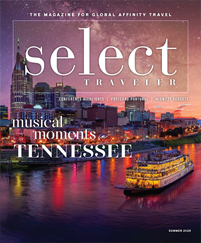Google performs 3.5 billion searches for users around the world each day. With such an unfathomable amount of traffic, Google’s ad platform, called Adwords, is the largest and most widely used online advertising network on the planet.
Google Adwords continuously tweaks its advertising capabilities, resulting in a platform capable of impressive data tracking and customizable options. But as the technology improves, using this behemoth company to get the word out about a small travel program can seem like an increasingly daunting task.
However, loyalty group travel programs of any size can harness the power of Google to their advantage by understanding a key concept: geotargeting. A small company’s ad doesn’t need to reach the far corners of Google’s audience to make a marketing impact. Instead, its field should be narrowed to target users in the right geographic areas, income brackets and age demographics.
Geotargeting 101
Geotargeting allows advertisers to choose who sees their ads based on the viewers’ zip codes or places of interest. This technique is used by Facebook, Twitter, Google and other online marketing platforms so small businesses can ensure relevant people see their ads. For example, an Arizona Mexican restaurant wouldn’t want to pay for ad views from Web users as far away as Pittsburgh.
Adwords offers three options when targeting by location: targeting using a physical location, targeting destinations for which people are searching online and a combination of both.
To set up a geotargeting ad based on a physical location, enter a zip code, a city name or a destination, and a radius within which you want to reach. Banks with a travel program would want to restrict their ad for a bank trip to the area they service for maximum results. This option of geotargeting may work best for most loyalty travel programs, since targeting people searching for the area online may result in too many casual visitors who wouldn’t be interested in joining a travel program.
The platform also lets advertisers exclude people from certain locations if there is an area the advertiser knows will probably not yield many interested viewers. After running a few campaigns, advertisers can examine what areas generate the least leads and cut those areas out of future marketing endeavors for a higher return on investment.
There are often many marketers trying to reach users in densely populated, affluent cities, so group travel planners in those markets may have to pay more for online advertising than those in small towns. For those wanting to attract people in multiple regions, such as a bank with more than one branch, each region can have a separate ad campaign that is directed specifically at that area. For example, an alumni travel program seeking to invest more money on advertising toward the original campus than the satellite campus location can specify these ad budgets with separate ad campaigns.
Understanding Keywords
For some travel planners, a geographic area may not contain all the potentially interested viewers. For those types of programs, advertisers can target based on keywords rather than physical location.
For example, an alumni travel planner might set one campaign to target people searching for “Georgetown alumni,” so no matter where the viewer is, that person will see an ad for Georgetown University’s alumni travel program. Advertisers should beware of using only generic keywords, since Google Adwords’ prices are set by a bidding system. So, common keywords like “travel” would be highly coveted and expensive, whereas more specific searches like “Albuquerque businesses” would be much more limiting for someone attempting to promote Albuquerque’s Chamber of Commerce travel program.
The trick is to find a set of keywords for which enough people are searching but not so many that the advertiser will face stiff competition. Travel planners should use online aids such as Adwords’ Keyword Tool to determine a list of relevant keywords and the amount of Web traffic each word brings.
To help narrow the list of potential search terms, planners can also select negative keywords to weed out the irrelevant viewers. Chamber groups could remove anyone searching with the keyword “visitor” from seeing their ad, since they rely more on locals to join their programs.
If a keyword set proves too expensive, advertisers can use tools like Wordstream, which integrates keywords relevant to the content to let them know the volume of each keyword and its competition.
Beyond Geography
Google Adwords allows users to target more than just location and keywords. Advertising campaigns can also be narrowed by income and age demographics. For a luxury alumni travel program, a Google advertisement targeted to higher income brackets would ideally appear only to potential customers, instead of reaching a wider audience of varying income levels.
For groups with a variety of tour prices, multiple campaigns aimed at different income brackets could also yield the most return on investment.
Narrowing age demographics can also prove useful for groups with age limits, such as a bank travel program limited to travelers aged 50 and up. With those age limits set up, a bank program’s ad would appear only to seniors who qualify.
For many advertisers, the limits set up in their Adwords campaigns need to be re-evaluated constantly. Instead of running the same ad to the same group of people, planners should continually tweak and examine data to make sure their advertising dollars are well spent.
Adwords Performance Grader and other online tools work to help clients analyze their Adwords campaigns by reporting on the strength of their mobile optimization, landing pages, click-through rates and text ad optimization. If an Adwords campaign doesn’t work the first time, planners should try again after more research. With the right online advertising campaign in place, group travel clients are only a click away.









